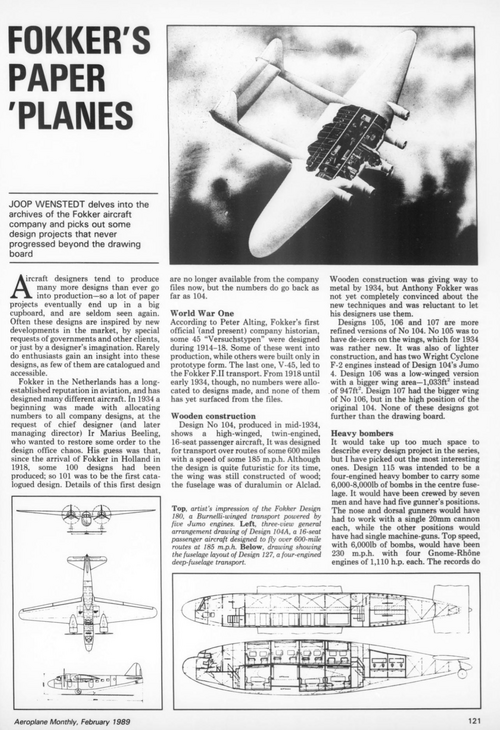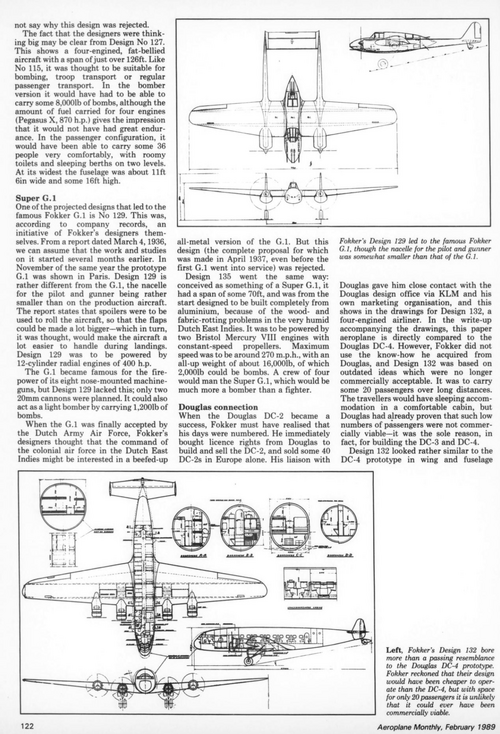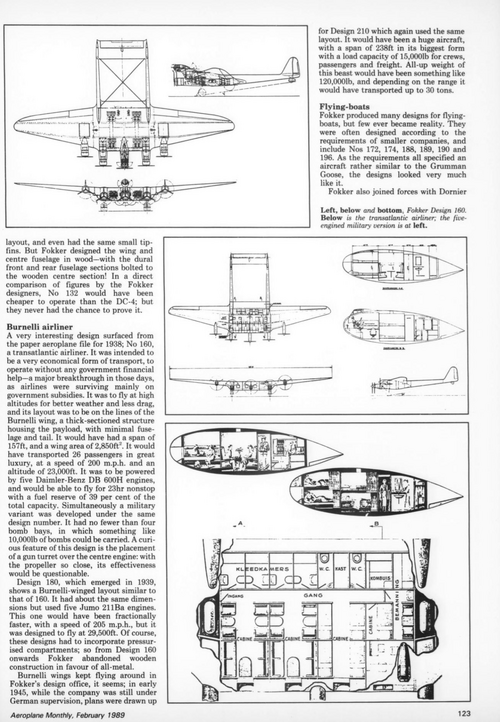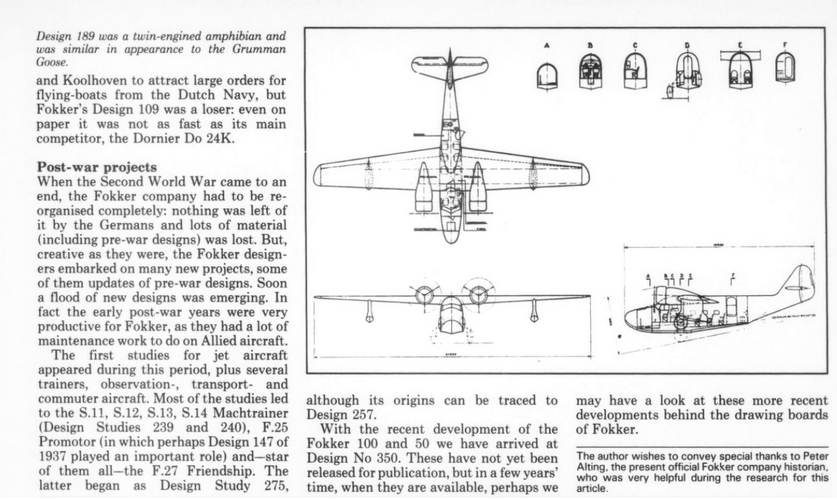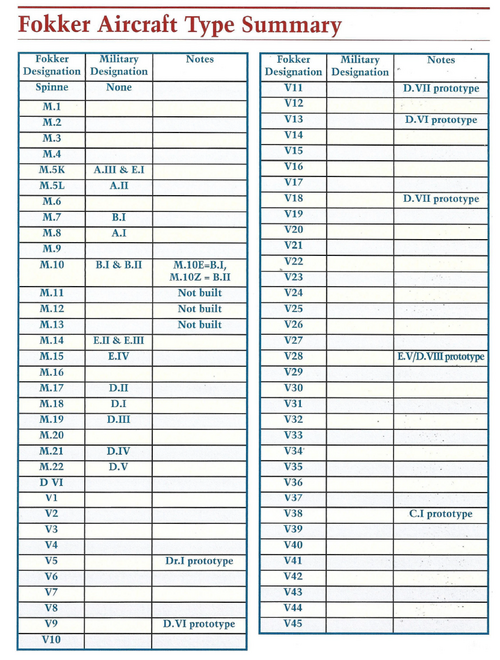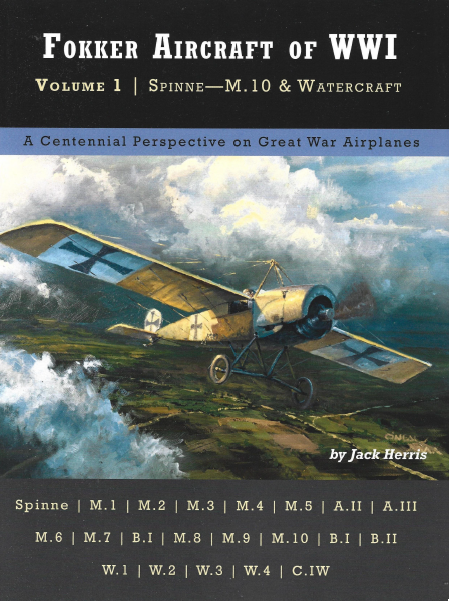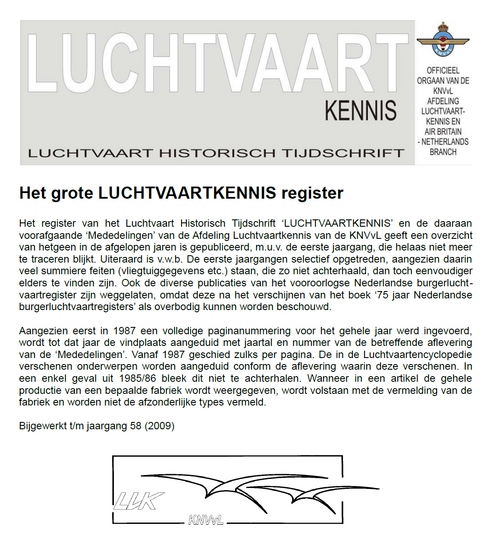- Joined
- 25 July 2007
- Messages
- 4,299
- Reaction score
- 4,196
Fokker Designation Style
First World War Fokker Aircraft Designations
While in Germany, Anthony Fokker's various corporate entities applied internal designations to aircraft designs. This early designation series began with 'M' for 'Militär' followed by an individual type number in Arabic numerals. This 'M' series ran from the M 1 observation monoplane of 1913 to the M 22 (D.V) biplane fighter of 1916.
'M' series designation details will be found in the introduction to Fokker 'M' Series Aircraft Designations
Initially, the German military simply adopted the corporate nomenclature of the 'M' series but, later, the Inspektion der Fliegertruppen (Idflieg) assigned role-specific designations to aircraft accepted for use by the German Army's Luftstreitkräfte. During WWI, various Fokker service types would have the following Idflieg role designators applied:
- 'A' : For early unarmed reconnaissance/observation monoplanes
- 'B' : For early unarmed reconnaissance/observation biplanes
- 'C' : For singled-engined reconnaissance-bombers*
-- * Fokker's C.I 2-seater of 1918 was too late for German service
- 'D' : For single-engined, single-seat biplane fighters (later all fighters)
- 'Dr': For single-engined, single-seat triplane fighters (Dreidecker)
- 'E' : For single-engined, single-seat monoplane fighters (Eindecker)
- 'F' : For experimental fighter; poss. orig. Idflieg triplane desig.**
-- ** Sole application was Fokker F I triplanes, the pre-series Dr Is
- 'K' : For combat aircraft (Kampfflugzeug)***
-- *** Sole application was 1915 K I twin-engined, 3-seat fighter
- 'V' : For prototypes (Versuchflugzeug)
- 'W' : For Wasserflugzeug (flying boat and floatplanes)
For completeness, I will list Fokker letter designation which have already been covered by Jemiba in Fokker Designations, 1912 - 1921.
https://www.secretprojects.co.uk/forum/index.php/topic,16947.msg163646.html
As the war progressed, the unarmed 'A' and 'B' types faded away. By 1918, all fighters were designated in the 'D' sequences (Idflieg dropping its earlier 'Dr', 'E', and 'K' designators). Many of the late-WWI Idflieg role designaters would be kept in use when Anthony Fokker moved his aircraft operations to the Netherlands in 1919.
One completely anomalous designation of this period is the Fokker V-LC. This aircraft is recorded as being a 2-seat D.VII derivative - a description that fits the Fokker V 31 glider tug conversion or the V 35 (which some sources list as a 2-seat D.VII development). The Fokker V-LC was said to be captured by or surrendered to the French and, in 1919, donated to the Argentine Armada. So, was 'V-LC' a weird, one-off Fokker designation (or possibly a garbled 'V-CL' combining 'Prototype' + 'CL-typ'?) or was that V-LC appellation actually applied by the French?
Post WWI - Early NV Nederlandsche Vliegtuigenfabriek Designations
Most famous (or infamous) for WWI fighters, Fokker carried over the wartime 'D' series designations without interruption to the sequence. The same might be said of the Idflieg 'C' series designations ... except Fokker's first C.I airframe had only just been completed as WWI ended. The 'V' for prototypes series of designations was also continued in sequence ... but only until the end of 1919. [1]
Fokker also briefly continued use of the Idflieg-style 'W' designater (now for Watervliegtuig rather than Wasserflugzeug). This was short-lived, being applied to early-stage designs - the W.II, a twin-float airliner concept also known by the compound designation F.W., or simply as the "Avion commercial". (Later on, 'W' would become the designation suffix for all Fokker aircraft on floats.)
Other early-style compound designations applied to projects included:
- F.B. : For early-stage flying boat concepts
-- F.B. concepts would receive B-serie designations when built
- F.G. : For 'Fokker Glijdvliegtuig' (Fokker Glider)
- F.W. : For 'Fokker Watervliegtuig' (Fokker Water aircraft or floatplane)
-- F.W. concepts seem to relate exclusively to early T-serie designs
- V.W. : Seemingly for 'Verkeers Watervlieg' (Commercial Floatplane)
-- V.W.3, a 1920 float-airliner design appears to be sole V.W. application
It would seem that these compound designations were applied to advanced projects. Once those projects were considered viable for production, replacement designations would be applied.
Fokker changed Idflieg-style role designater letters to suit his own needs. Most famously, 'F' was recycled for commercial aircraft ... seemingly now simply standing for 'Fokker'. [2] Fokker also added new role designater letters as he found them necessary. These included:
- B : For 'Boot' (ie: Vliegboot or flying boat)*
-- * Fokker also used 'Amphibievliegboot' (with or w/o wheeled u/c) [3]
- CC: For 'Luchtkruiser' ('Air Cruisers' or Heavy Multi-Role Aircraft)
-- No CC type built. Desig. suggests recce but more like medium bombers
- CG: For Recce-Fighters, AFAIK, only applied to unbuilt CG.2**
-- ** aka Ontwerp 154, orig. designated G.2, then C.16 before CG.2
- CS: For Recce-Trainers, AFAIK, only applied to unbuilt CS.III
- DC: For 2-seat Fighter-Reconnaissance (1923 DC.I and unbuilt DC.II)
- G : For Jachtkruisers (multi-engined, multi-seat fighters, eg: G.1)
- S = For dedicated training aircraft (Lesvliegtuig, lesson planes)
- T = Torpedo-bombers and Bombers (Torpedovliegtuigen en Bommenwerpers)
Fokker Type Numbers Styles
Following Idflieg role designation letters, aircraft type numbers were rendered in Roman numerals. [4] Again, Fokker followed that German pattern upon his return to the Netherlands. Numbers were applied sequentially - in an uninterrupted continuation of the wartime sequence where Idfleig designaters were reused. That system remained unchanged through to the unbuilt Fokker F.XXI project of circa 1933.
In mid-1930s, someone - doubtless in the marketing department - decided that Fokker commercial designs should have non-sequential designations based upon their seating capacity. The first commercial design to reflect this new policy was the four-engined Fokker F.XXXVI airliner of 1934. This aircraft had a crew of four plus thirty-two passengers for a total of thirty-six. So, at that point, the F-serie designations suddenly jump from F.XXI - the twenty-first commercial design - to F.XXXVI for the thirty-six people on board.
The F-serie became more confusing when the next design was the 22-seat Fokker F.XXII of 1935. As the designation shows, the F.XXII - a reduced-scale Fokker F.XXXVI - carried twenty-two people. But the emerging trend of the time was for airliners to carry even larger passenger loads. And designations like F.XXXVI were already becoming highly unwieldy. That may have clinched the decision to switch from Roman to Arabic numerals. Thus, the F.XXXVI became a more-manageable F.36 while the F.XXII became the F.22.
Switching to Arabic numerals for Fokker designations was probably a good idea but it never really stuck. The aviation press continued to apply Roman numerals to Fokker products. And they can hardly be blamed since Fokker itself continued to paint Roman numeral designations onto the fins of its aircraft. (That results in a conundrum for listers of Fokker designations. I have been idiosyncratic and listed Roman numerals for designations wherever that seems to be the commonest usage.)
Post-WW2 Fokker Aircraft Designation Styles
The Arabic numeral designations finally stuck after WW2. Here the F-serie returns to a chronological sequence. Ironically, these spring from 1939's unbuilt F.24 - a designation based on its twenty-four passenger seats. However, from that point, F-serie designations revert back to a chronologically progress - from the F.25 Promotor of 1947 to the unbuilt F.29 jetliner of 1979. But then, once again, the marketing department had its way with designations.
A simple example is the Friendship commuterliner of 1955. Once the Ontwerp 275 studies were finalized, the designation F.27 was applied. This type would also be built under license by Fairchild in the US where it would be designated F-27. Perhaps as a result of that, aviation journalists could never quite decide whether a period or a hyphen should be used in the designation. That might be why, eventually, Fokker gave up and starting referring to their aircraft as an F27. (For consistency, I have stuck - more or less - with the period until the advent of the F28 jetliner.)
In the mid-1980s, the Marketing Department had its way with Fokker designation style yet again. An updated and re-engined F.27 derivatives was announced in November 1983 as the 'F.50' program. Marketed as the 'Fokker 50', this design was known internally as the Fokker F27 Mark 050. Similarly, the Fokker 50U utility transport for military use had the internal designation F27 Mark 0502. Likewise, the stretched Fokker 60 was known internally as the F27 Mark 0604. [5]
Following the pattern of the 'F.50'/Fokker 50, a modernized F28 was dubbed 'F.100'. Marketed as the Fokker 100, this stretched update was designated internally as the F28 Mark 0100.
Post-WW2 Fokker sub-type styles will be covered below.
Fokker Sub-Type Suffix Letters
As noted with the post-WWI 'W' designater letter for floatplanes, Fokker also used suffix letters. The commonest were sub-type identifiers. Generally, these follow an alphabetical sequence. The commonest form for sub-type suffixes are lower-case letters - eg: F.VIIa. However, even Fokker drawings often showed the sub-types rendered as capital letters. In the late 1930s, the capital letter style for sub-types became official - eg: G.1A and G.1B.
Fairly major changes to a design would result in a new sub-type number being assigned. So, for example, longer-span wings turned the F.VIIa into a F.VIIb. However, if the basic airframe remained unaltered but other changes were put in place, a modifier suffix was added. For example, when the eenmotorig F.VIIa was modified into a trimotor, it became the driemotorig F.VIIa/3m.
In cases of changed roles or basic equipment, a further suffix could be tacked on after a hyphen. Early on, there was one application of 'F' as a modifier - tacked on to the unbuilt T.III-F (aka F.W.) to show a planned commercial derivative of a torpedo-bomber seaplane. The most common fitment modifier was the -W suffix (for 'Watervliegtuig' - floats, in Dutch, are drijvers). Less commonly, when floatplane designs were to be adapted to a wheeled undercarriage, an -L for Land suffix was added to the basic designation - eg: T.VIII-W/L.
The T.VIII-W/L was a one-off land-version of the T.VIII-W/C ... which brings up some late additions to the suffix list. The 1939 T.VIII-W was retroactively re-designated T.VIII-W/G. That '/G' add-on stood for 'Gemengd' (Gemengde constructie/Mixed construction) referring mainly to this seaplane's fabric-covered rear fuselage. The retroactive change was necessary to make sense of the next designation in the sequence - the T.VIII-W/M for 'Metaal' (Metalen constructie) with its semi-monocoque duralumin rear fuselage. These were then followed chronologically by the enlarged T.VIII-W/C. That 'C' was a for a sub-type - 'missing' designations being for a proposed Bristol Mercury VI-powered T.VIII-W/A and the Pegasus XXIV-powered T.VIII-W/B, also unbuilt.
'M' had been used earlier as a modifier suffix. 'M' could stand for Metaal but, more often, 'M' stood for Militair vliegtuig. Eg: the F.VIIa/3m-M was a bomber adaptation of the F.VIIa/3m airliner. Then there was the F.XIIM (note the absence of a hyphen), a locally-improved version of the F.XII trimotor airliner for Denmark's DDL. This 'M' is a bit of an anomaly and it is tempting to suggest that it was a purely Danish addition (perhaps for Modificeret?) which was outside of the standard Fokker designation style.
Fokker Post-WW2 Sub-Type Styles
With the F.27, Fokker made a complete change in sub-type designations. The prewar alphabetical sequence was replaced with British-style Mark numbers. So, the first production version F.27 was an F.27 Mk 100 which progressed in a series up to the F.27 Mk 700. With the F28, Mark numbers jumped into the thousands. So, the first production model F28 was the F28 Mk 1000. That series ran a high as the F28 Mk 6000 (the F28 Mk 6600 being an unbuilt sub-type for the Japanese market).
Fokker Post-WW2 Role-Modifier Designations
Likewise, the postwar style of role-modifier designations were quite different. Applied as suffix letters, these modifiers revealed a fairly major change within a Mark or a role changes.
Some civilian examples are:
- F28 Mk 3000C : 'C' for Cargo, referring to a freight door added to a basic Mk 3000
- F28 Mk 3000R : 'R' for Rekkend (extended), ref. to long-span wing on Mk 3000 fuselage
- F28 Mk 3000RC: 'C' for Cargo, refers to a freight door fitted to the F28 Mk.3000R
- Fokker 100 QC: 'QC' for Quick Change combi cargo-to-passenger carrying capability
There are a larger number of role-modifier designation suffixes among military Fokkers. Examples are:
- 'M' for Military - eg: F.27-300M and F.27-500M military cargo a/c
- 'MA' for (??) - eg: unbuilt F.27MA project with rear-loading doors [6]
- 'MS' for Military STOL - eg: F.27MS, slatted, spoilered F.27MA deriv.
- 'MPS' for Maritime Patrol Surveillance - eg: F.27MPS patrol aircraft
- 'MPA' for Maritime Patrol Aircraft - eg: F.27MPA based on F.27-200
- 'MAR' for Maritime - alternative designation for the F.27MPA (above)
- 'ME' for Maritime Enforcer - eg: unbuilt ASW/ASV F.27-200ME project
- 'ME2' for Maritime Enforcer 2 - eg: F50ME2, as above but F50 airframe
- 'U' for Utility transport - eg: F50U and F60U
Since the bankruptcy of Fokker, there have been several attempts to restart production as well as modification programs proposed for existing types. This results in additional role-modifier suffixes like 'NG' (Next Generation) for proposed new-production models, Fokker 50 Freighter for JetIreland's proposed STC conversion, etc. These 'outside' suffixes are beyond our scope but will be noted in the type listings.
Separate posts with listings of specific Fokker type letter designation sequences will follow.
____________________________________________
[1] 'V' designations (including some compound designations) were 'recycled' briefly in the revised 1920-1925 Fokker designation system.
[2] There is one anomaly within the post-WWI F-serie - the F.IV parasol fighter of 1922. This D.X derivative was trialled by the US Army as its PW-5 but, other than being sold for export, the F.IV was in no sense a 'commercial aircraft'. Still, the rest of the 'F' serie were (or, at least, began as) commercial aircraft designs.
[3] The term 'Kruiservliegboot' (Cruiser flying boat) was applied to the 1923 B.II flying boat.
[4] In the Idflieg designation system, each airframe supplier had its aircraft type numbers applied sequentially. As a result, the designation 'D.I', as an example, meant little without mention of the specific D.I's manufacturer.
[5] From that F27 Mark 050, F27 Mark 0503, F27 Mark 0604 sequence, a missing 'F27 Mark 0x03' can be inferred.
[6] Presumably, in the F.27MA project designation, the 'A' in 'MA' simply indicates a major variation on the 'M' for Military in F.27M.
____________________________________________
Some Sources:
Articles
'Fokker Vliegtuigontowerpen 1920-1944', Frits Gerdessen, Luchtvaartkennis 2/2008, pp. 63-72
'Halfway-House Fokker: Story of the D XXI Fighter', Air Enthusiast Vol. 1, 1971, pp. 152-159
'The Fokker Fours: Development of the Largest Fokkers', Air Enthusiast Vol. 1, 1971, pp. 292-296
Books
Combat Aircraft of the World, JWR Taylor, Putnam, 1969
Combat Aircraft of World War Two, EC Weal, JWR Weal, BF Barker, Gage/Arms & Armour, 1977
Complete Book of Fighters, William Green & Gordon Swanborough, Salamander, 1996
Encyclopedia of the World's Commercial and Private Aircraft, David Mondey, Aerospace Publishing, 1981
Fokker D.VI, Windsock Datafile 84, P.M. Grosz, Albatros Productions, 2000
German and Austro-Hungarian Aircraft Manufacturers 1908-1918, Terry C. Treadwell, Amberley, 2010
German Aircraft of the First World War, Peter Gray & Owen Thetford, Putnam, 1962
Illustrated Encyclopedia of Propeller Airliners, Bill Gunston, Exeter/Phoebus, 1981 {??}
War Planes of the Second World War series, William Green, MacDonald, 1961-1962
- Fighters, Volume One, 1961 (Tenth impression, 1972)
- Fighters, Volume Three, 1961 (Sixth impression, Jan 1970)
- Floatplanes, Volume Six, 1962 (revised/reprinted 1968)
Outside Websites (a sampling)
Dutch Aviation - http://www.dutch-aviation.nl
Their Flying Machines - http://flyingmachines.ru/index.htm
First World War Fokker Aircraft Designations
While in Germany, Anthony Fokker's various corporate entities applied internal designations to aircraft designs. This early designation series began with 'M' for 'Militär' followed by an individual type number in Arabic numerals. This 'M' series ran from the M 1 observation monoplane of 1913 to the M 22 (D.V) biplane fighter of 1916.
'M' series designation details will be found in the introduction to Fokker 'M' Series Aircraft Designations
Initially, the German military simply adopted the corporate nomenclature of the 'M' series but, later, the Inspektion der Fliegertruppen (Idflieg) assigned role-specific designations to aircraft accepted for use by the German Army's Luftstreitkräfte. During WWI, various Fokker service types would have the following Idflieg role designators applied:
- 'A' : For early unarmed reconnaissance/observation monoplanes
- 'B' : For early unarmed reconnaissance/observation biplanes
- 'C' : For singled-engined reconnaissance-bombers*
-- * Fokker's C.I 2-seater of 1918 was too late for German service
- 'D' : For single-engined, single-seat biplane fighters (later all fighters)
- 'Dr': For single-engined, single-seat triplane fighters (Dreidecker)
- 'E' : For single-engined, single-seat monoplane fighters (Eindecker)
- 'F' : For experimental fighter; poss. orig. Idflieg triplane desig.**
-- ** Sole application was Fokker F I triplanes, the pre-series Dr Is
- 'K' : For combat aircraft (Kampfflugzeug)***
-- *** Sole application was 1915 K I twin-engined, 3-seat fighter
- 'V' : For prototypes (Versuchflugzeug)
- 'W' : For Wasserflugzeug (flying boat and floatplanes)
For completeness, I will list Fokker letter designation which have already been covered by Jemiba in Fokker Designations, 1912 - 1921.
https://www.secretprojects.co.uk/forum/index.php/topic,16947.msg163646.html
As the war progressed, the unarmed 'A' and 'B' types faded away. By 1918, all fighters were designated in the 'D' sequences (Idflieg dropping its earlier 'Dr', 'E', and 'K' designators). Many of the late-WWI Idflieg role designaters would be kept in use when Anthony Fokker moved his aircraft operations to the Netherlands in 1919.
One completely anomalous designation of this period is the Fokker V-LC. This aircraft is recorded as being a 2-seat D.VII derivative - a description that fits the Fokker V 31 glider tug conversion or the V 35 (which some sources list as a 2-seat D.VII development). The Fokker V-LC was said to be captured by or surrendered to the French and, in 1919, donated to the Argentine Armada. So, was 'V-LC' a weird, one-off Fokker designation (or possibly a garbled 'V-CL' combining 'Prototype' + 'CL-typ'?) or was that V-LC appellation actually applied by the French?
Post WWI - Early NV Nederlandsche Vliegtuigenfabriek Designations
Most famous (or infamous) for WWI fighters, Fokker carried over the wartime 'D' series designations without interruption to the sequence. The same might be said of the Idflieg 'C' series designations ... except Fokker's first C.I airframe had only just been completed as WWI ended. The 'V' for prototypes series of designations was also continued in sequence ... but only until the end of 1919. [1]
Fokker also briefly continued use of the Idflieg-style 'W' designater (now for Watervliegtuig rather than Wasserflugzeug). This was short-lived, being applied to early-stage designs - the W.II, a twin-float airliner concept also known by the compound designation F.W., or simply as the "Avion commercial". (Later on, 'W' would become the designation suffix for all Fokker aircraft on floats.)
Other early-style compound designations applied to projects included:
- F.B. : For early-stage flying boat concepts
-- F.B. concepts would receive B-serie designations when built
- F.G. : For 'Fokker Glijdvliegtuig' (Fokker Glider)
- F.W. : For 'Fokker Watervliegtuig' (Fokker Water aircraft or floatplane)
-- F.W. concepts seem to relate exclusively to early T-serie designs
- V.W. : Seemingly for 'Verkeers Watervlieg' (Commercial Floatplane)
-- V.W.3, a 1920 float-airliner design appears to be sole V.W. application
It would seem that these compound designations were applied to advanced projects. Once those projects were considered viable for production, replacement designations would be applied.
Fokker changed Idflieg-style role designater letters to suit his own needs. Most famously, 'F' was recycled for commercial aircraft ... seemingly now simply standing for 'Fokker'. [2] Fokker also added new role designater letters as he found them necessary. These included:
- B : For 'Boot' (ie: Vliegboot or flying boat)*
-- * Fokker also used 'Amphibievliegboot' (with or w/o wheeled u/c) [3]
- CC: For 'Luchtkruiser' ('Air Cruisers' or Heavy Multi-Role Aircraft)
-- No CC type built. Desig. suggests recce but more like medium bombers
- CG: For Recce-Fighters, AFAIK, only applied to unbuilt CG.2**
-- ** aka Ontwerp 154, orig. designated G.2, then C.16 before CG.2
- CS: For Recce-Trainers, AFAIK, only applied to unbuilt CS.III
- DC: For 2-seat Fighter-Reconnaissance (1923 DC.I and unbuilt DC.II)
- G : For Jachtkruisers (multi-engined, multi-seat fighters, eg: G.1)
- S = For dedicated training aircraft (Lesvliegtuig, lesson planes)
- T = Torpedo-bombers and Bombers (Torpedovliegtuigen en Bommenwerpers)
Fokker Type Numbers Styles
Following Idflieg role designation letters, aircraft type numbers were rendered in Roman numerals. [4] Again, Fokker followed that German pattern upon his return to the Netherlands. Numbers were applied sequentially - in an uninterrupted continuation of the wartime sequence where Idfleig designaters were reused. That system remained unchanged through to the unbuilt Fokker F.XXI project of circa 1933.
In mid-1930s, someone - doubtless in the marketing department - decided that Fokker commercial designs should have non-sequential designations based upon their seating capacity. The first commercial design to reflect this new policy was the four-engined Fokker F.XXXVI airliner of 1934. This aircraft had a crew of four plus thirty-two passengers for a total of thirty-six. So, at that point, the F-serie designations suddenly jump from F.XXI - the twenty-first commercial design - to F.XXXVI for the thirty-six people on board.
The F-serie became more confusing when the next design was the 22-seat Fokker F.XXII of 1935. As the designation shows, the F.XXII - a reduced-scale Fokker F.XXXVI - carried twenty-two people. But the emerging trend of the time was for airliners to carry even larger passenger loads. And designations like F.XXXVI were already becoming highly unwieldy. That may have clinched the decision to switch from Roman to Arabic numerals. Thus, the F.XXXVI became a more-manageable F.36 while the F.XXII became the F.22.
Switching to Arabic numerals for Fokker designations was probably a good idea but it never really stuck. The aviation press continued to apply Roman numerals to Fokker products. And they can hardly be blamed since Fokker itself continued to paint Roman numeral designations onto the fins of its aircraft. (That results in a conundrum for listers of Fokker designations. I have been idiosyncratic and listed Roman numerals for designations wherever that seems to be the commonest usage.)
Post-WW2 Fokker Aircraft Designation Styles
The Arabic numeral designations finally stuck after WW2. Here the F-serie returns to a chronological sequence. Ironically, these spring from 1939's unbuilt F.24 - a designation based on its twenty-four passenger seats. However, from that point, F-serie designations revert back to a chronologically progress - from the F.25 Promotor of 1947 to the unbuilt F.29 jetliner of 1979. But then, once again, the marketing department had its way with designations.
A simple example is the Friendship commuterliner of 1955. Once the Ontwerp 275 studies were finalized, the designation F.27 was applied. This type would also be built under license by Fairchild in the US where it would be designated F-27. Perhaps as a result of that, aviation journalists could never quite decide whether a period or a hyphen should be used in the designation. That might be why, eventually, Fokker gave up and starting referring to their aircraft as an F27. (For consistency, I have stuck - more or less - with the period until the advent of the F28 jetliner.)
In the mid-1980s, the Marketing Department had its way with Fokker designation style yet again. An updated and re-engined F.27 derivatives was announced in November 1983 as the 'F.50' program. Marketed as the 'Fokker 50', this design was known internally as the Fokker F27 Mark 050. Similarly, the Fokker 50U utility transport for military use had the internal designation F27 Mark 0502. Likewise, the stretched Fokker 60 was known internally as the F27 Mark 0604. [5]
Following the pattern of the 'F.50'/Fokker 50, a modernized F28 was dubbed 'F.100'. Marketed as the Fokker 100, this stretched update was designated internally as the F28 Mark 0100.
Post-WW2 Fokker sub-type styles will be covered below.
Fokker Sub-Type Suffix Letters
As noted with the post-WWI 'W' designater letter for floatplanes, Fokker also used suffix letters. The commonest were sub-type identifiers. Generally, these follow an alphabetical sequence. The commonest form for sub-type suffixes are lower-case letters - eg: F.VIIa. However, even Fokker drawings often showed the sub-types rendered as capital letters. In the late 1930s, the capital letter style for sub-types became official - eg: G.1A and G.1B.
Fairly major changes to a design would result in a new sub-type number being assigned. So, for example, longer-span wings turned the F.VIIa into a F.VIIb. However, if the basic airframe remained unaltered but other changes were put in place, a modifier suffix was added. For example, when the eenmotorig F.VIIa was modified into a trimotor, it became the driemotorig F.VIIa/3m.
In cases of changed roles or basic equipment, a further suffix could be tacked on after a hyphen. Early on, there was one application of 'F' as a modifier - tacked on to the unbuilt T.III-F (aka F.W.) to show a planned commercial derivative of a torpedo-bomber seaplane. The most common fitment modifier was the -W suffix (for 'Watervliegtuig' - floats, in Dutch, are drijvers). Less commonly, when floatplane designs were to be adapted to a wheeled undercarriage, an -L for Land suffix was added to the basic designation - eg: T.VIII-W/L.
The T.VIII-W/L was a one-off land-version of the T.VIII-W/C ... which brings up some late additions to the suffix list. The 1939 T.VIII-W was retroactively re-designated T.VIII-W/G. That '/G' add-on stood for 'Gemengd' (Gemengde constructie/Mixed construction) referring mainly to this seaplane's fabric-covered rear fuselage. The retroactive change was necessary to make sense of the next designation in the sequence - the T.VIII-W/M for 'Metaal' (Metalen constructie) with its semi-monocoque duralumin rear fuselage. These were then followed chronologically by the enlarged T.VIII-W/C. That 'C' was a for a sub-type - 'missing' designations being for a proposed Bristol Mercury VI-powered T.VIII-W/A and the Pegasus XXIV-powered T.VIII-W/B, also unbuilt.
'M' had been used earlier as a modifier suffix. 'M' could stand for Metaal but, more often, 'M' stood for Militair vliegtuig. Eg: the F.VIIa/3m-M was a bomber adaptation of the F.VIIa/3m airliner. Then there was the F.XIIM (note the absence of a hyphen), a locally-improved version of the F.XII trimotor airliner for Denmark's DDL. This 'M' is a bit of an anomaly and it is tempting to suggest that it was a purely Danish addition (perhaps for Modificeret?) which was outside of the standard Fokker designation style.
Fokker Post-WW2 Sub-Type Styles
With the F.27, Fokker made a complete change in sub-type designations. The prewar alphabetical sequence was replaced with British-style Mark numbers. So, the first production version F.27 was an F.27 Mk 100 which progressed in a series up to the F.27 Mk 700. With the F28, Mark numbers jumped into the thousands. So, the first production model F28 was the F28 Mk 1000. That series ran a high as the F28 Mk 6000 (the F28 Mk 6600 being an unbuilt sub-type for the Japanese market).
Fokker Post-WW2 Role-Modifier Designations
Likewise, the postwar style of role-modifier designations were quite different. Applied as suffix letters, these modifiers revealed a fairly major change within a Mark or a role changes.
Some civilian examples are:
- F28 Mk 3000C : 'C' for Cargo, referring to a freight door added to a basic Mk 3000
- F28 Mk 3000R : 'R' for Rekkend (extended), ref. to long-span wing on Mk 3000 fuselage
- F28 Mk 3000RC: 'C' for Cargo, refers to a freight door fitted to the F28 Mk.3000R
- Fokker 100 QC: 'QC' for Quick Change combi cargo-to-passenger carrying capability
There are a larger number of role-modifier designation suffixes among military Fokkers. Examples are:
- 'M' for Military - eg: F.27-300M and F.27-500M military cargo a/c
- 'MA' for (??) - eg: unbuilt F.27MA project with rear-loading doors [6]
- 'MS' for Military STOL - eg: F.27MS, slatted, spoilered F.27MA deriv.
- 'MPS' for Maritime Patrol Surveillance - eg: F.27MPS patrol aircraft
- 'MPA' for Maritime Patrol Aircraft - eg: F.27MPA based on F.27-200
- 'MAR' for Maritime - alternative designation for the F.27MPA (above)
- 'ME' for Maritime Enforcer - eg: unbuilt ASW/ASV F.27-200ME project
- 'ME2' for Maritime Enforcer 2 - eg: F50ME2, as above but F50 airframe
- 'U' for Utility transport - eg: F50U and F60U
Since the bankruptcy of Fokker, there have been several attempts to restart production as well as modification programs proposed for existing types. This results in additional role-modifier suffixes like 'NG' (Next Generation) for proposed new-production models, Fokker 50 Freighter for JetIreland's proposed STC conversion, etc. These 'outside' suffixes are beyond our scope but will be noted in the type listings.
Separate posts with listings of specific Fokker type letter designation sequences will follow.
____________________________________________
[1] 'V' designations (including some compound designations) were 'recycled' briefly in the revised 1920-1925 Fokker designation system.
[2] There is one anomaly within the post-WWI F-serie - the F.IV parasol fighter of 1922. This D.X derivative was trialled by the US Army as its PW-5 but, other than being sold for export, the F.IV was in no sense a 'commercial aircraft'. Still, the rest of the 'F' serie were (or, at least, began as) commercial aircraft designs.
[3] The term 'Kruiservliegboot' (Cruiser flying boat) was applied to the 1923 B.II flying boat.
[4] In the Idflieg designation system, each airframe supplier had its aircraft type numbers applied sequentially. As a result, the designation 'D.I', as an example, meant little without mention of the specific D.I's manufacturer.
[5] From that F27 Mark 050, F27 Mark 0503, F27 Mark 0604 sequence, a missing 'F27 Mark 0x03' can be inferred.
[6] Presumably, in the F.27MA project designation, the 'A' in 'MA' simply indicates a major variation on the 'M' for Military in F.27M.
____________________________________________
Some Sources:
Articles
'Fokker Vliegtuigontowerpen 1920-1944', Frits Gerdessen, Luchtvaartkennis 2/2008, pp. 63-72
'Halfway-House Fokker: Story of the D XXI Fighter', Air Enthusiast Vol. 1, 1971, pp. 152-159
'The Fokker Fours: Development of the Largest Fokkers', Air Enthusiast Vol. 1, 1971, pp. 292-296
Books
Combat Aircraft of the World, JWR Taylor, Putnam, 1969
Combat Aircraft of World War Two, EC Weal, JWR Weal, BF Barker, Gage/Arms & Armour, 1977
Complete Book of Fighters, William Green & Gordon Swanborough, Salamander, 1996
Encyclopedia of the World's Commercial and Private Aircraft, David Mondey, Aerospace Publishing, 1981
Fokker D.VI, Windsock Datafile 84, P.M. Grosz, Albatros Productions, 2000
German and Austro-Hungarian Aircraft Manufacturers 1908-1918, Terry C. Treadwell, Amberley, 2010
German Aircraft of the First World War, Peter Gray & Owen Thetford, Putnam, 1962
Illustrated Encyclopedia of Propeller Airliners, Bill Gunston, Exeter/Phoebus, 1981 {??}
War Planes of the Second World War series, William Green, MacDonald, 1961-1962
- Fighters, Volume One, 1961 (Tenth impression, 1972)
- Fighters, Volume Three, 1961 (Sixth impression, Jan 1970)
- Floatplanes, Volume Six, 1962 (revised/reprinted 1968)
Outside Websites (a sampling)
Dutch Aviation - http://www.dutch-aviation.nl
Their Flying Machines - http://flyingmachines.ru/index.htm

